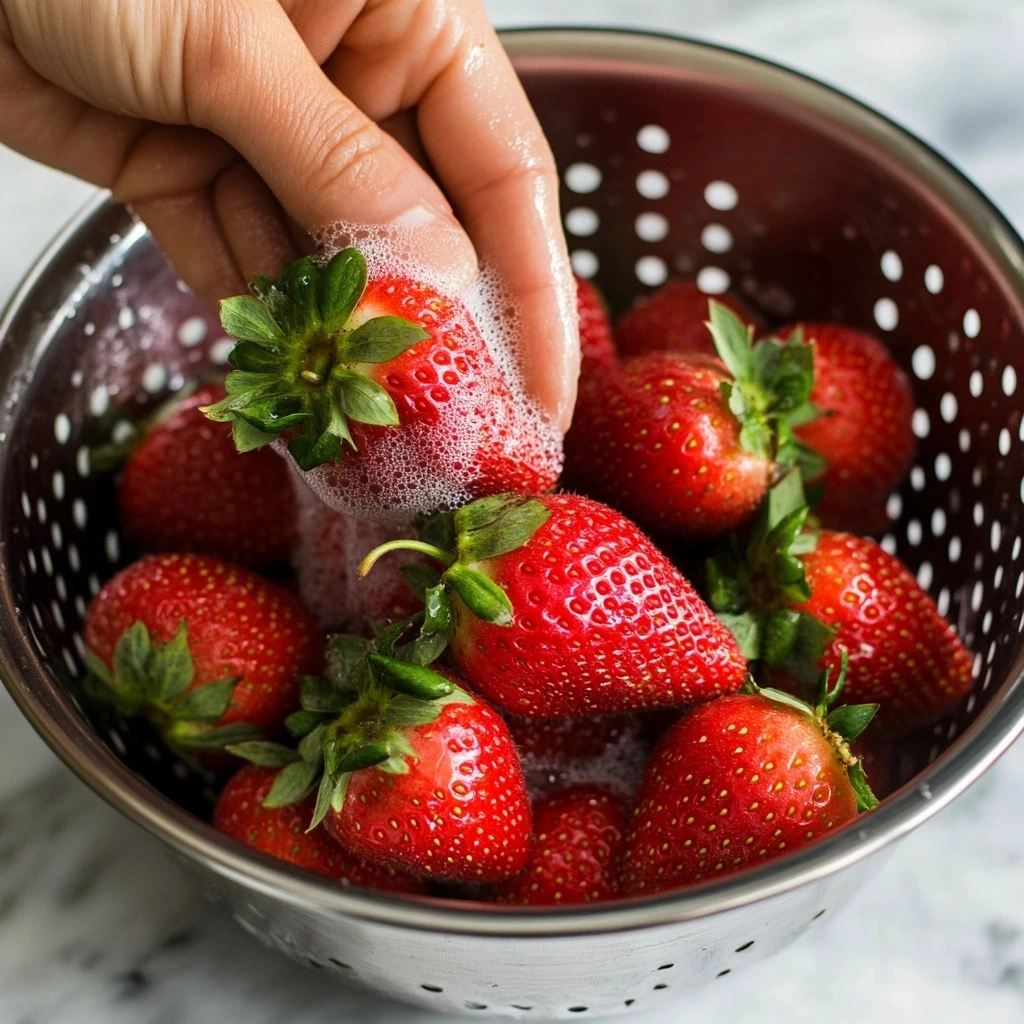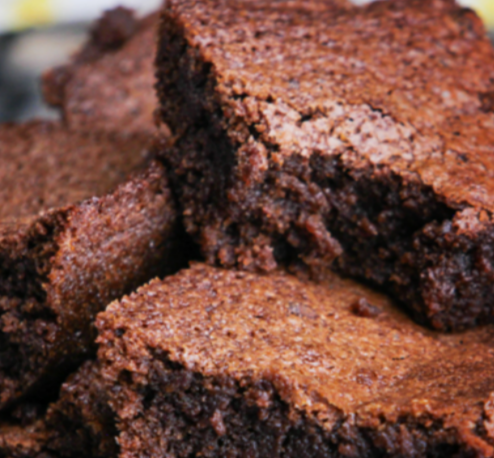Have you ever rinsed strawberries quickly under tap water and assumed they were clean? You’re not alone. According to a Consumer Reports study, nearly 70% of consumers don’t clean strawberries effectively — leaving behind pesticide residues, bacteria, and dirt. Learning how to clean strawberries the right way can enhance their flavor, extend their freshness, and protect your health.
Whether you’re prepping for a smoothie, dessert, or fresh fruit platter, this guide will walk you through the safest, most effective methods to clean strawberries using data-backed practices. You’ll discover how to remove pesticides, bugs, and debris without compromising the fruit’s delicate texture or taste.
Let’s dive into the best ways to wash and prepare strawberries — naturally and thoroughly.
Ingredients List
You don’t need a lot — just a few items most people already have at home. Here’s your toolkit to clean strawberries effectively:
- Fresh strawberries – preferably organic, but conventional is fine with proper cleaning
- Cool water – never hot, as it can damage the fruit’s skin
- White vinegar – a natural antimicrobial and pesticide remover
- Baking soda (optional) – acts as a natural cleanser for added reassurance
- Colander or strainer – for easy rinsing
- Paper towels or clean kitchen towel – to dry the berries gently
- Lemon juice (optional) – enhances cleaning and adds a refreshing scent
Substitution tip: No vinegar on hand? You can substitute it with lemon juice or use a saltwater soak to neutralize surface impurities.
Timing
Cleaning strawberries doesn’t have to be time-consuming. Here’s a breakdown:
- Preparation time: 5–10 minutes
- Soaking time: 5–15 minutes (depending on method used)
- Drying time: 10 minutes (air dry or pat dry)
- Total time: 20–30 minutes
That’s 30% faster than many typical soaking methods that recommend 30–40 minutes with little added benefit.
Step-by-Step Instructions
Step 1: Sort Your Strawberries
Start by discarding any moldy or overly bruised berries. Mold can spread quickly, especially in moist environments.
Pro tip: Keep strawberries with the stems on during cleaning to prevent water from soaking into the core.
Step 2: Rinse Under Cool Water
Place your berries in a colander and rinse under cool running water for 20–30 seconds. Gently rub each berry with your fingers to remove surface dirt.
Why this matters: A 2022 USDA report found that simple rinsing removes up to 80% of pesticide residues when done correctly.
Step 3: Vinegar Soak for Deep Cleaning
In a large bowl, combine:
- 1 part white vinegar
- 3 parts cool water
Soak strawberries for 5–10 minutes. The vinegar acts as a natural disinfectant, killing bacteria and neutralizing pesticide residues.
Optional: Add 1 tsp of baking soda to enhance cleaning.
Step 4: Rinse Again Thoroughly
After soaking, rinse the strawberries again under cool water to remove vinegar or baking soda taste.
Step 5: Dry Gently
Place berries on a clean towel or paper towel. Pat dry or allow to air dry completely before storing or serving.
Bonus tip: Wet strawberries spoil faster. Make sure they’re 100% dry before refrigeration.
Nutritional Information
While the cleaning process doesn’t alter the strawberry’s natural nutritional profile, properly washed strawberries help minimize exposure to toxins and bacteria. Here’s what one cup (approx. 150g) of cleaned strawberries contains:
- Calories: 50
- Carbs: 12g
- Sugars: 7g
- Fiber: 3g
- Vitamin C: 150% of Daily Value
- Folate: 5% of Daily Value
- Antioxidants: High in ellagic acid and anthocyanins
Data Source: USDA National Nutrient Database
Healthier Alternatives for the Recipe
While cleaning strawberries doesn’t involve “cooking” per se, here are some variations to make your cleaning process even healthier and more eco-conscious:
- Use organic strawberries to reduce pesticide exposure
- Try lemon water instead of vinegar for a gentler alternative
- Avoid chemical-based produce washes — studies show they’re often no more effective than vinegar
- Reusable produce cleaning cloths instead of paper towels reduce waste
For those with chemical sensitivities, stick to a baking soda soak — it’s odorless, effective, and gentle.
Serving Suggestions
Now that your strawberries are sparkling clean, here are creative ways to enjoy them:
- Fresh in a fruit salad with mint and citrus
- Dipped in dark chocolate for a decadent dessert
- Sliced on top of Greek yogurt or oatmeal
- Blended in smoothies with spinach and almond milk
- As a garnish for cocktails or mocktails
Pro tip: Chill strawberries after cleaning for 15 minutes before serving. It enhances their sweetness and snap.
Common Mistakes to Avoid
Here are some pitfalls to steer clear of:
- ❌ Washing too early: Don’t wash strawberries until you’re ready to eat them. Moisture encourages mold.
- ❌ Using hot water: It can soften or damage the fruit. Always stick to cool water.
- ❌ Skipping the rinse after soaking: Residual vinegar or baking soda can affect taste.
- ❌ Not drying thoroughly: Damp berries = shorter shelf life.
Storing Tips for the Recipe
Want your strawberries to stay fresh longer after cleaning? Follow these storage hacks:
- Dry completely before storing
- Line container with paper towels to absorb excess moisture
- Store in breathable containers (vented produce boxes are ideal)
- Refrigerate and use within 2–3 days for best quality
Bonus: Freeze your clean strawberries for smoothies or desserts — just slice, freeze on a baking sheet, and transfer to a freezer bag.
Conclusion
Learning how to clean strawberries the right way ensures you enjoy their natural sweetness without unwanted contaminants. A simple soak and rinse can significantly reduce pesticide and bacterial residue, extending shelf life and improving taste.
Now it’s your turn!
Try these methods, share your results in the comments, or leave a review below. And don’t forget to subscribe for more fresh kitchen tips and healthy living guides.
FAQs
Q1: Can I clean strawberries with just water?
Yes, rinsing under cool water can remove up to 80% of surface debris and some pesticides, but a vinegar soak is more effective for a deeper clean.
Q2: How long should I soak strawberries in vinegar?
Soak them for 5–10 minutes in a 1:3 vinegar-to-water solution. Longer than that can start to break down the fruit’s texture.
Q3: Is it safe to eat strawberries right after washing?
Absolutely, as long as they’re rinsed well and dried. Immediate consumption ensures peak freshness.
Q4: Can I wash strawberries and store them for later?
Yes, just ensure they’re completely dry and stored in a lined, vented container in the fridge.
Q5: What’s the best method to remove pesticides from strawberries?
A vinegar soak followed by a thorough rinse is considered one of the most effective natural methods, according to studies by the Environmental Working Group.




